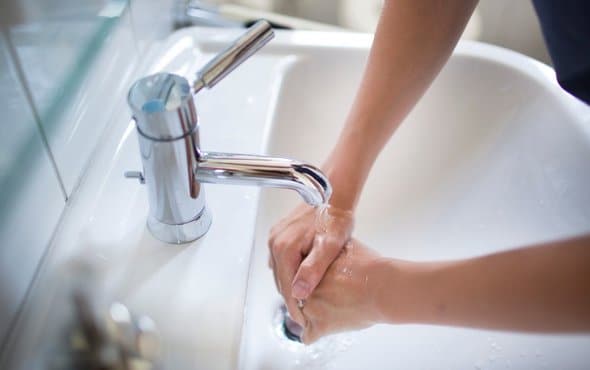
Health care professionals know the vital importance of hand hygiene in preventing the spread of disease in health care settings. In the day to day life of most, the simple act of washing hands can dramatically reduce the spread of disease and illness.
Why is this important? According to the World Health Organization, “Hand hygiene is not a luxury.” Multiple illnesses and diseases spread through contact with other people, pets, and everyday objects. One of the easiest and most effective ways to prevent this spread is proper hand hygiene.
Hygiene and Healthiness
Personal hygiene includes practices that promote the cleanliness of the body. These include the steps taken to remove dirt, unwanted particles, and wastes from the skin. These simple steps are the front line of defense against illness and disease. Experts agree that it is unwise to understate the role that good hygiene, especially hand hygiene, plays in everyday life.
The Centers for Disease Control and Prevention (CDC) stresses the need for keeping hands clean, stating this single practice is “one of the most important steps” toward preventing the spread of germs that cause illness and disease. The simple act of washing the hands can make a huge difference in the spread of germs that cause disease.
Why It Matters
Germs get onto hands all day long: during food preparation, when toileting, when cleaning the home, while at work and when relaxing with family, friends and pets. A child forgetting to wash their hands after toileting can spread over a trillion germs to others. These potentially infectious bacteria can then travel person to person through physical contact and by touching objects contaminated by others.
Common ways that bacteria can spread include:
- A person’s hands pick up bacteria by touching his mouth, nose, or eyes then spread these germs to family and friends through contact with an object.
- Unclean hands handling food spread bacteria to the food, passing potentially infectious germs to those eating the food.
- Hands touch raw foods, such as chicken, when preparing meals. Bacteria picked up from the raw food is then passed to other foods, such as salad or cooked foods while serving.
- A child sneezing, coughing, rubbing his eyes, blowing his nose, or not washing hands after toileting touches other children and toys, passing potentially infectious bacteria to others.
- The dog licks herself or the cat scratches in the litter box before its human pets it or allows it to lick a hand. Bacteria is then transmitted to anyone or anything the human touches.
This is how illness and disease can spread. Washing the hands with soap and clean running water can prevent this spread.
When to Wash Hands
Most incidences of the spreading of disease result from human actions or inactions. The CDC recommends multiple acts of daily life that should prompt the washing of hands.
- Preparation of food: before, during, and after.
- Before consuming food for meals or snacks.
- Before and after administering care to the sick.
- Before and after providing first aid or care for a wound or cut.
- After toileting.
- After cleaning a child who has used the toilet or changing a diaper.
- After sneezing, coughing, or blowing the nose.
- After petting or playing with an animal, handling animal feed, or cleaning up animal waste.
- After handling pet foods or treats.
- After handling garbage or trash.
Adopting the habit of frequent hand-washing plays a significant role in protecting individual wellness and preventing the spread of disease.
Improving Hand Hygiene in Everyday Life
The best way to reduce the number of bacteria on hands in most situations is to wash them with soap and clean running water. Liquid soap is preferable to bar soap. There may be instances when soap and/or water is not available; if so, an alcohol-based hand sanitizer that is at least 60-percent alcohol is an acceptable substitute. Remember, however, that the effectiveness of these hand sanitizers declines when hands are visibly greasy or soiled.
Alcohol-based hand sanitizers are popular, but they do not eliminate all types of bacteria and may not remove all harmful chemicals.
It is important for schools and public spaces, such as malls, to have public handwashing facilities available for students and patrons. Children should be taught from an early age to wash their hands after toileting and encouraged to wash hands before meals. Businesses should place reminders to wash hands in public toilets and around food service areas.
In addition, properly cleaning objects touched by multiple people on a frequent basis is an invaluable adjunct to the protection hand-washing affords. Handrails, door knobs, benches, chairs, and toys need disinfecting frequently, especially during cold and flu seasons. This can seem like an overwhelming task but the payoff in less days of missed school, less days off work due to illness, and less admission to hospital for illness is well worth it.
Man Versus Bacteria
Bacteria have survived in nature for millions of years because of their simplicity: namely, they have a simple genomic framework with genes that provide only the basic processes of survival. Fortunately, humans can beat these microbes with straightforward practices that prevent the spread of these germs. The best way to battle bacteria and the illnesses and diseases they cause is by washing your hands – frequently, consistently and effectively.
Bobbie R. Byrd is a retired registered nurse and teacher. She lives in rural southwest Mississippi where she spends her days writing freelance articles and original fiction, playing with her dogs, and pondering the ways of the world.
Request a demo of Vitalacy’s Automated Hand Hygiene Monitoring Solution today!
Author
-

Vitalacy is committed to reducing patient harm in healthcare through better hand hygiene and patient safety solutions. Bluetooth-enabled smart sensors and wearables help improve outcomes and Leapfrog Hospital Safety Grades.
View all posts




